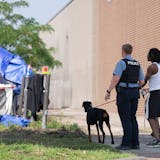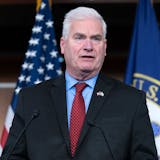Metro Transit's Route 5 is one of its busiest lines, providing an average of 19,000 rides on weekdays. It's also a route that too often lags behind schedule.
To improve on-time performance, Metro Transit plans to spend about $457,000 to bring its Transit Signal Priority (TSP) technology to part of the route, which runs 18 miles from Brooklyn Center to the Mall of America in Bloomington.
TSP allows computers on buses to communicate with traffic control signals to request longer green lights or shorter red lights. In turn, that keeps buses moving. The signal control gets the request from the bus, then decides if it can grant the extended green or cut a red light short provided the request does not disrupt other traffic movement, said Gary Nyberg, Metro Transit's Manager of Technology Systems and Bus Operations.
TSP does not allow buses to pre-empt a signal to change from red to green like police cars, fire trucks and ambulances can, Nyberg said.
Here is how it works: A computer using GPS technology on the bus can send a request to the traffic signal once it has entered a detection zone where a request could reach a traffic signal. Drivers cannot initiate the request. Only computers can send a request and only if the bus is running a minute or more behind schedule. The signal control unit decides either to grant or deny the request.
"It's a strategy where buses are requesting priority treatment through intersections," Nyberg said. "It allows for reliable travel times" and keeps buses on schedule.
On Route 5, 20 percent of buses this year have not been on time, he said. When that happens, buses tend to bunch up and become crowded as passengers get on the bus that is running late instead of the bus that is right behind and the one they intended to get on.
Every weekday, Route 5 buses make 126 northbound trips and 121 southbound tips. During peak periods, there are as many as 23 buses on the line. The urban route is rife with opportunities for delays due to heavy traffic, crashes and long waits at bus stops to accommodate high numbers of riders boarding and alighting.

